Renal Pathology Introduction: 150gm: each kidney 1700 liters

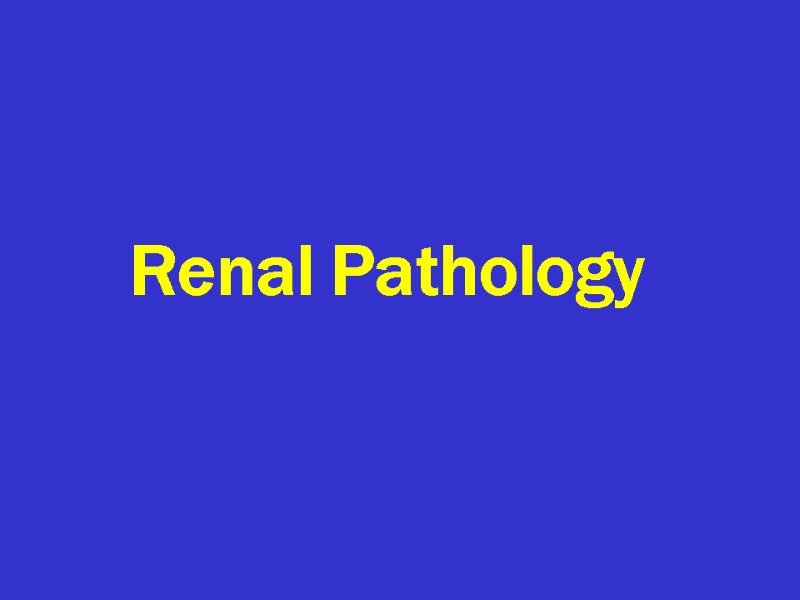
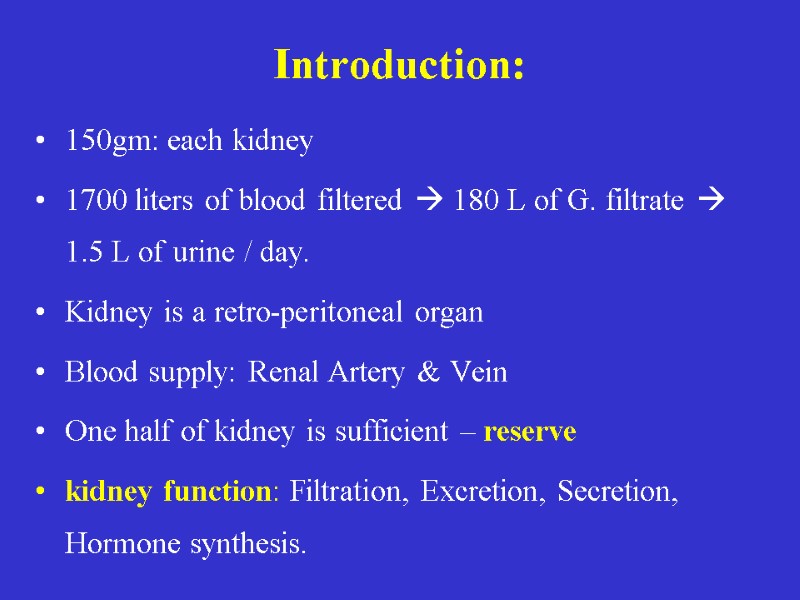
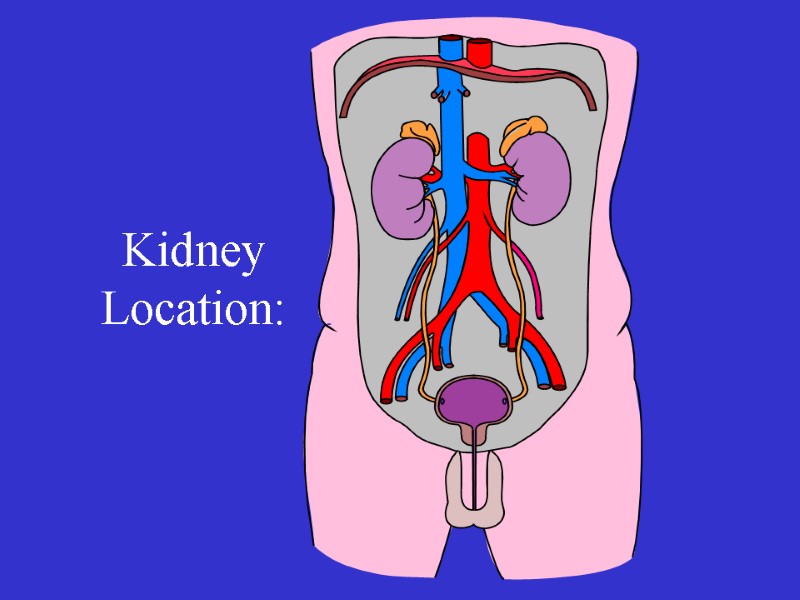
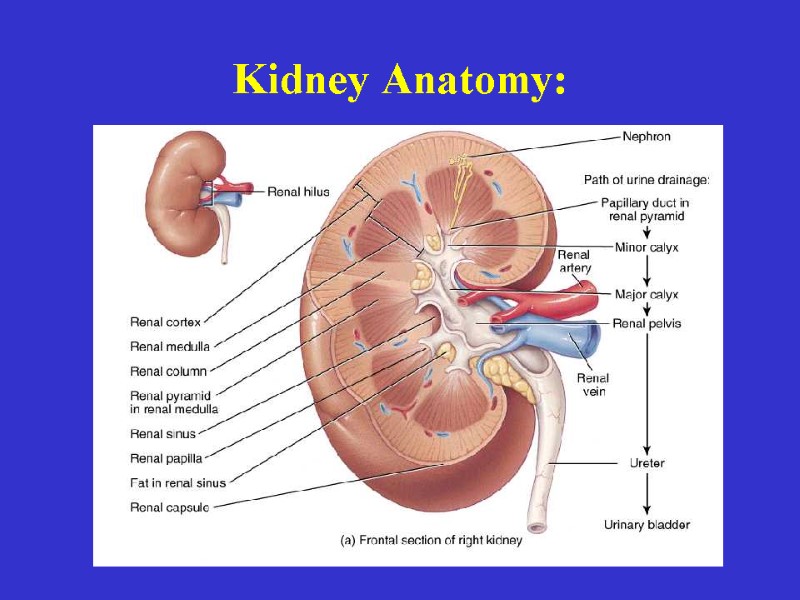
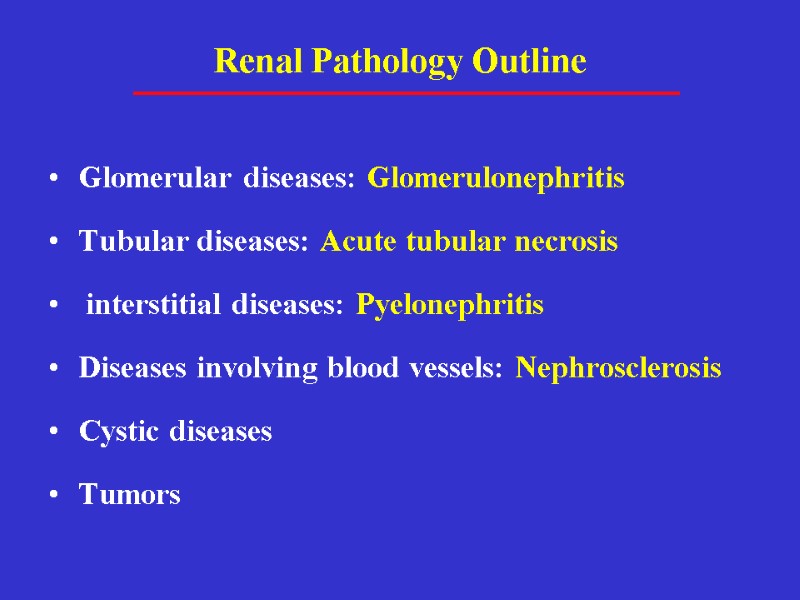
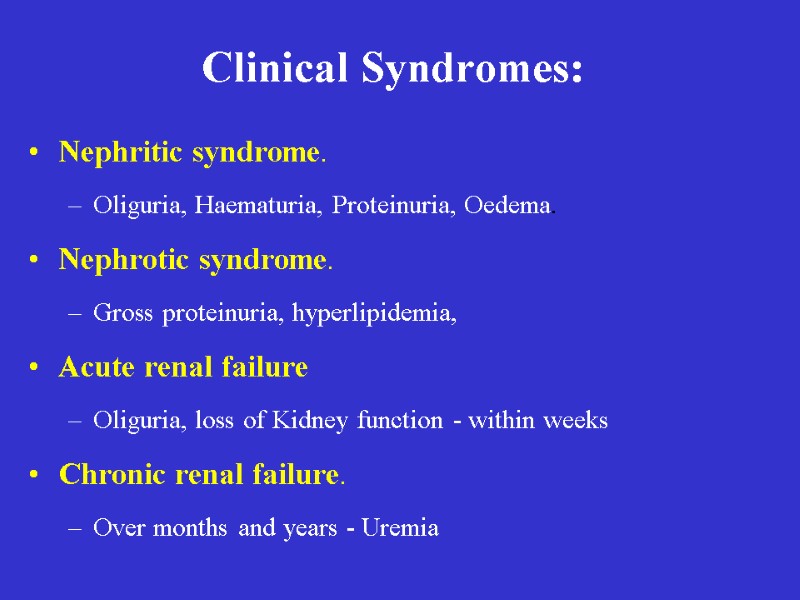

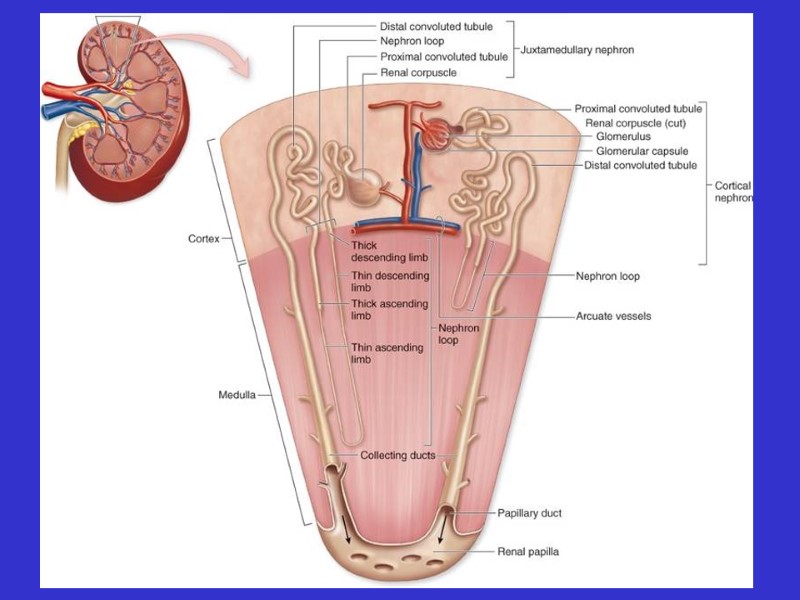
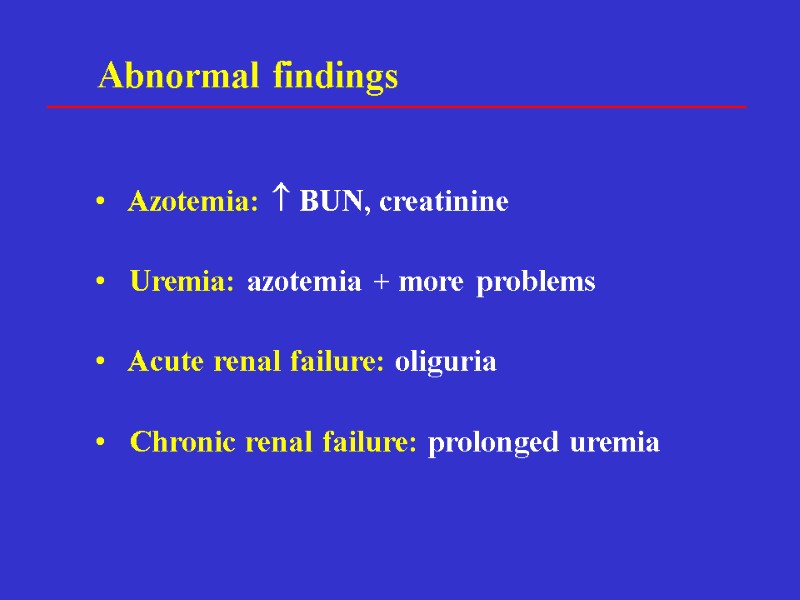
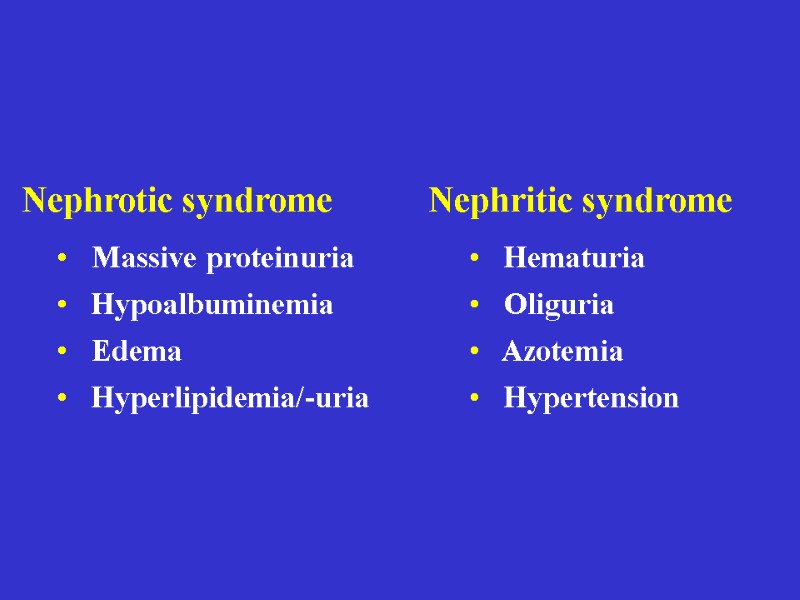
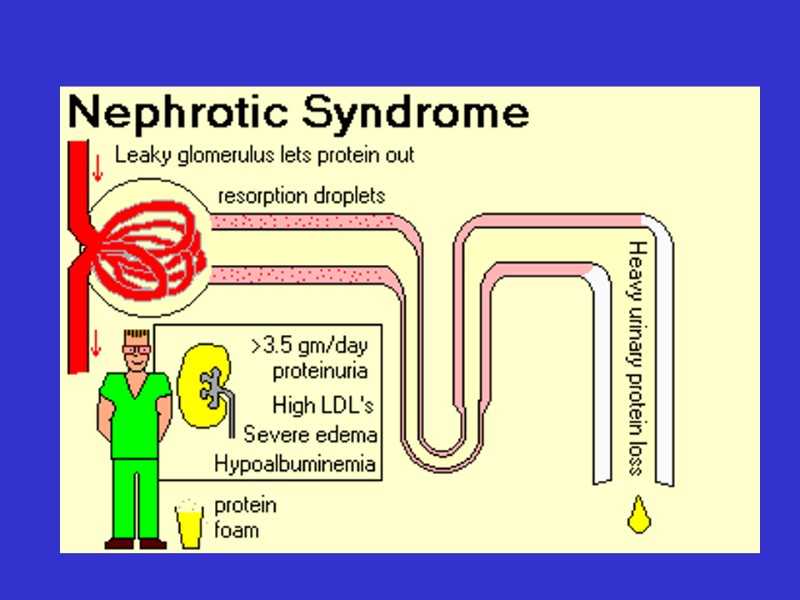
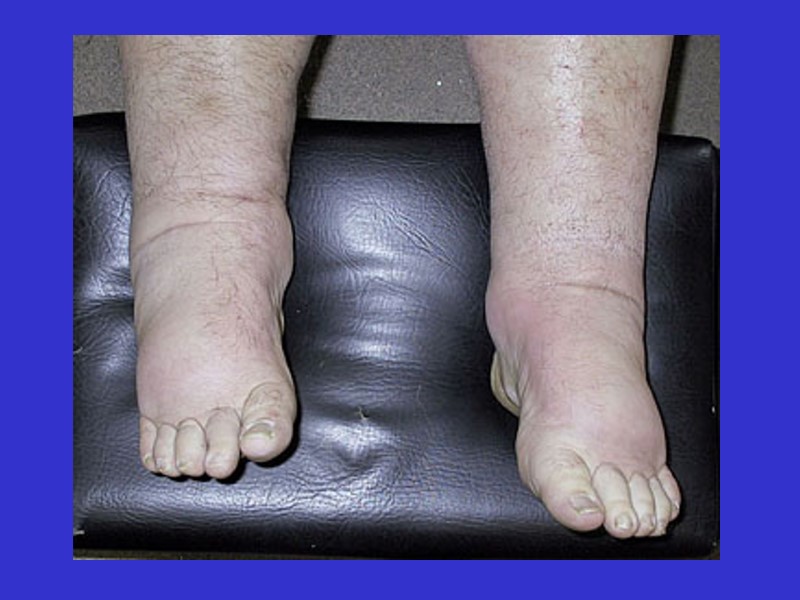
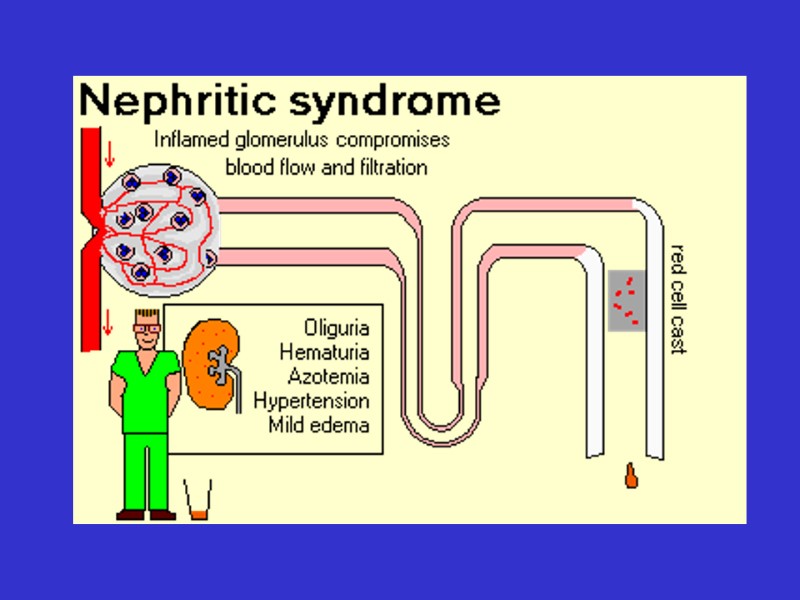
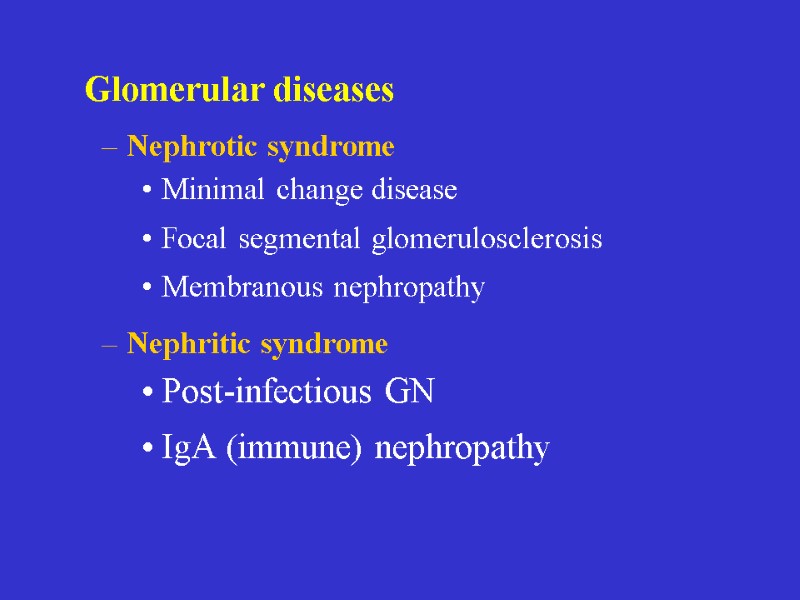
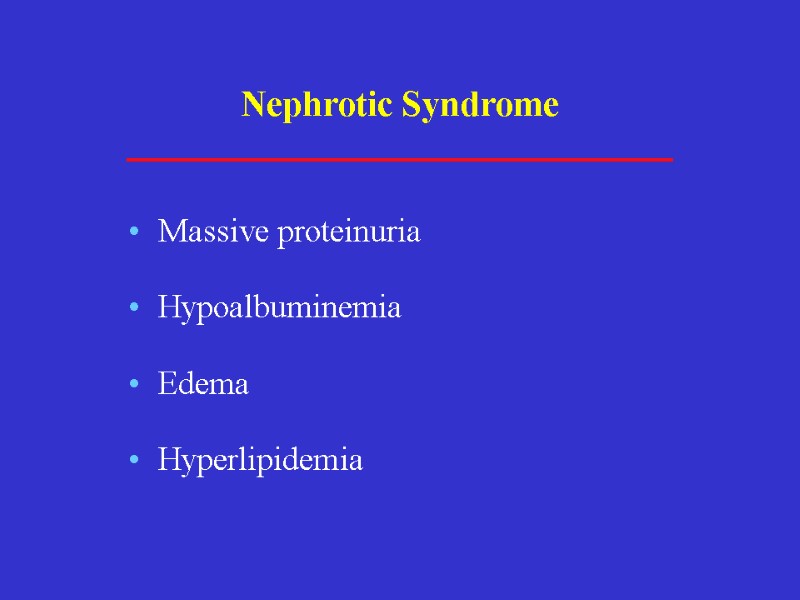
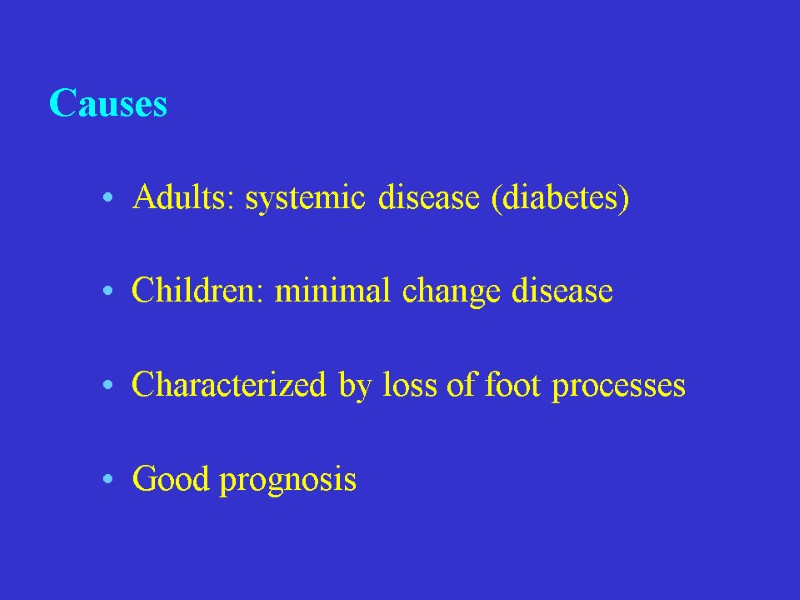
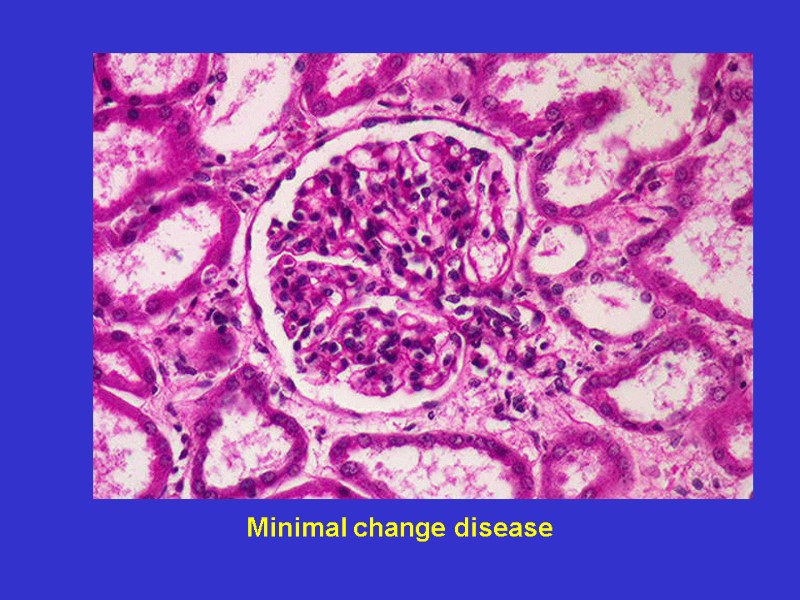
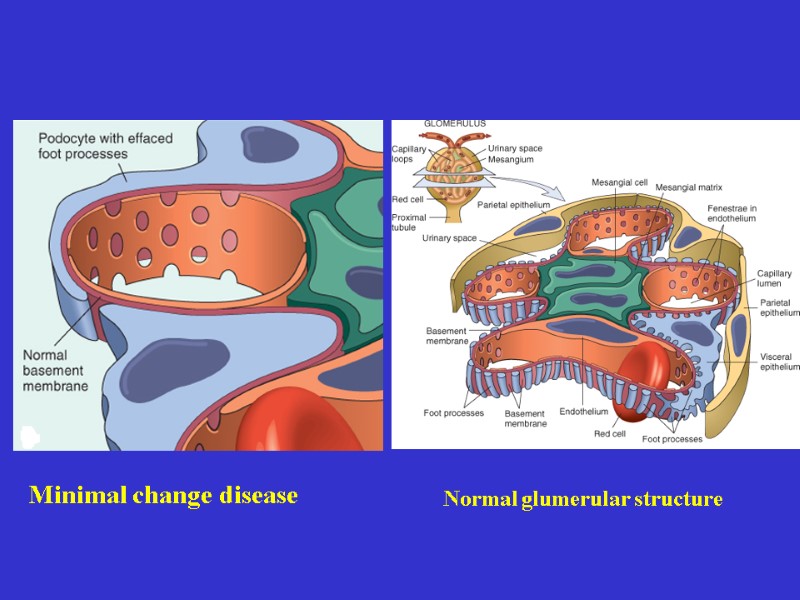
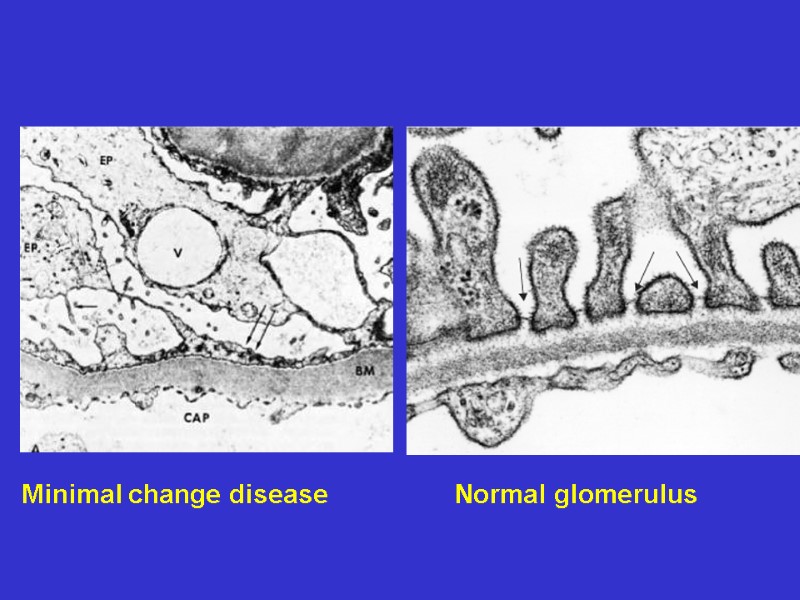
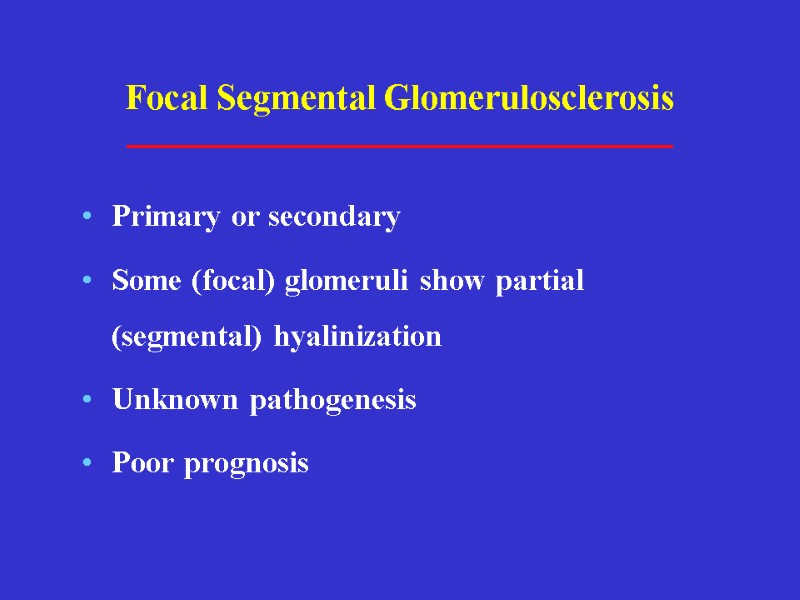
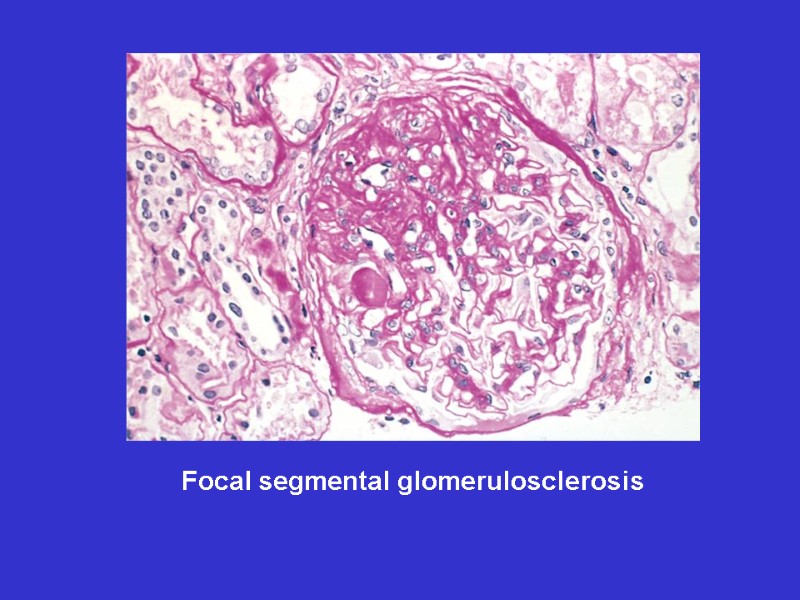
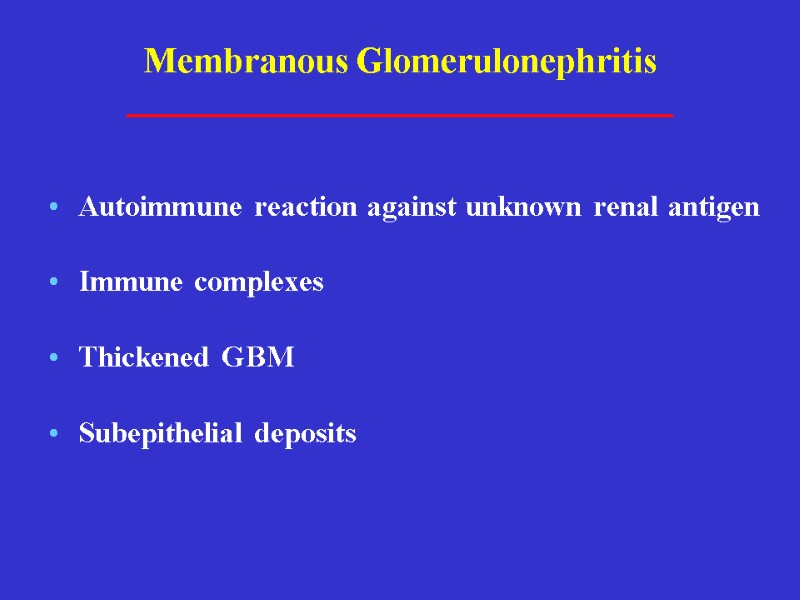
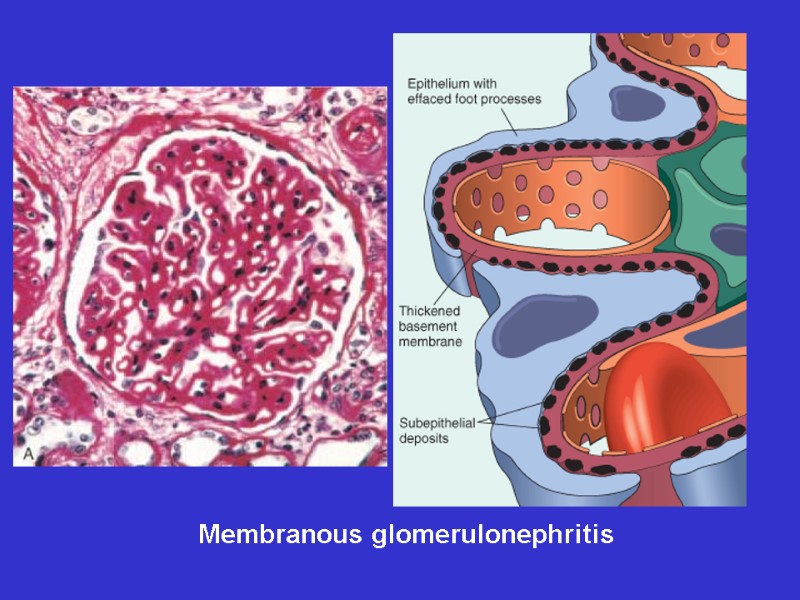
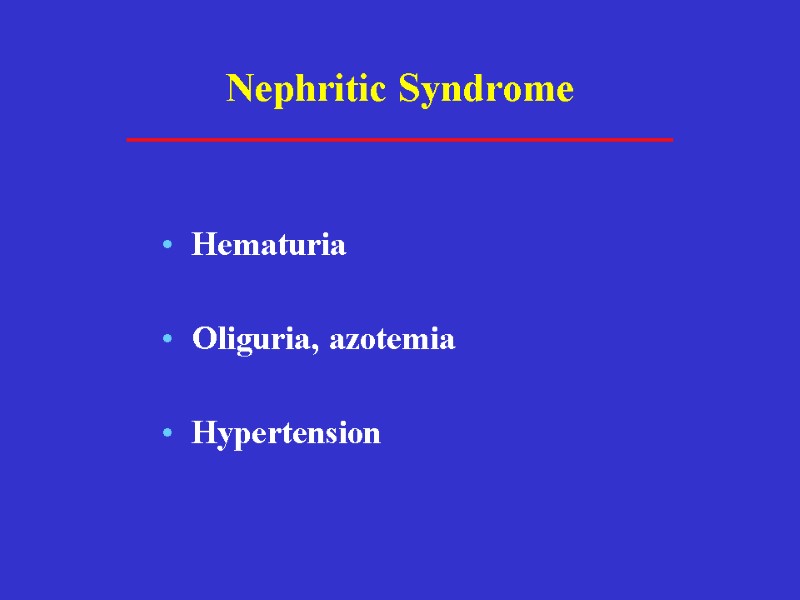
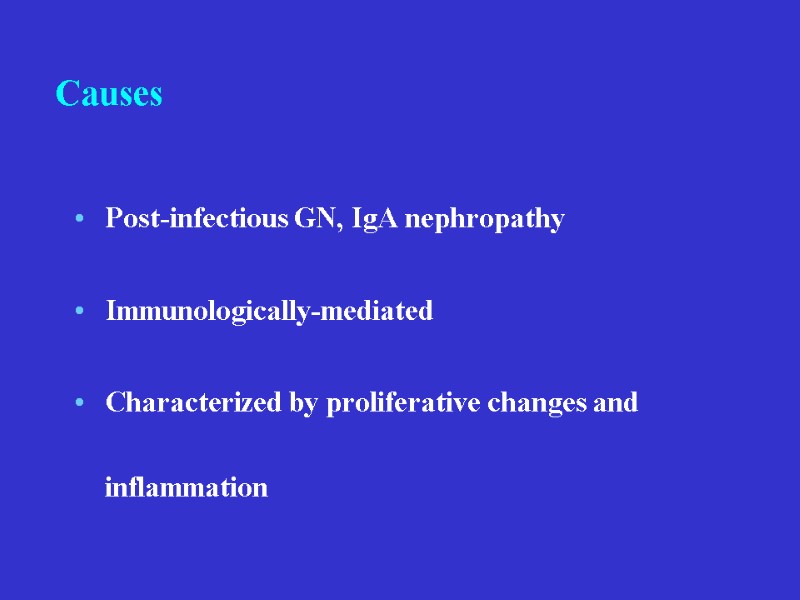
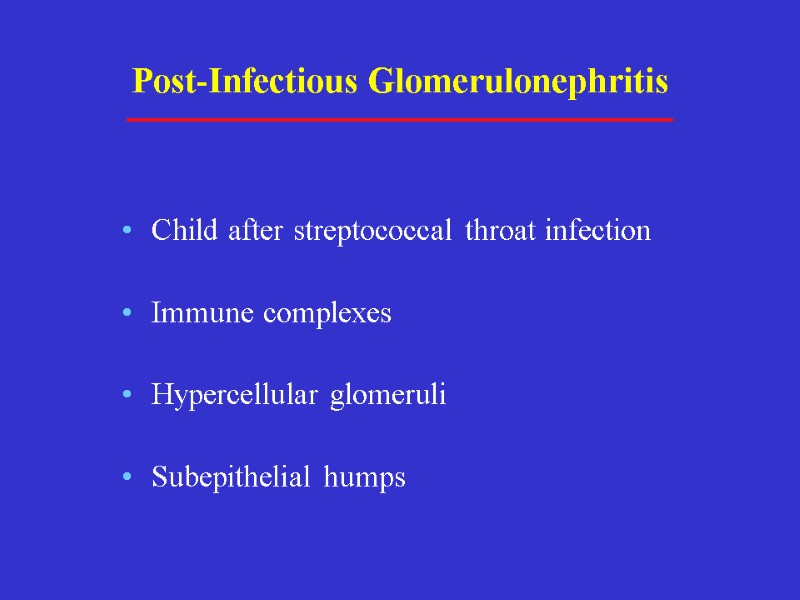
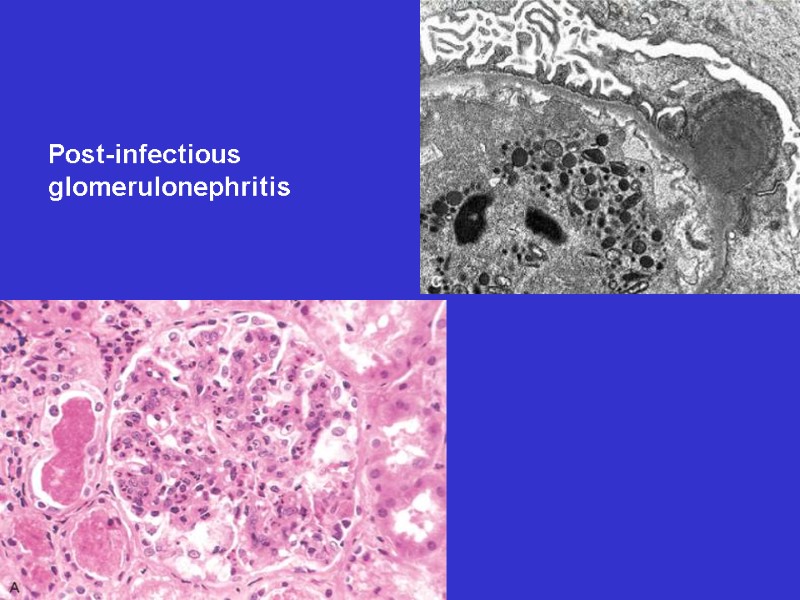
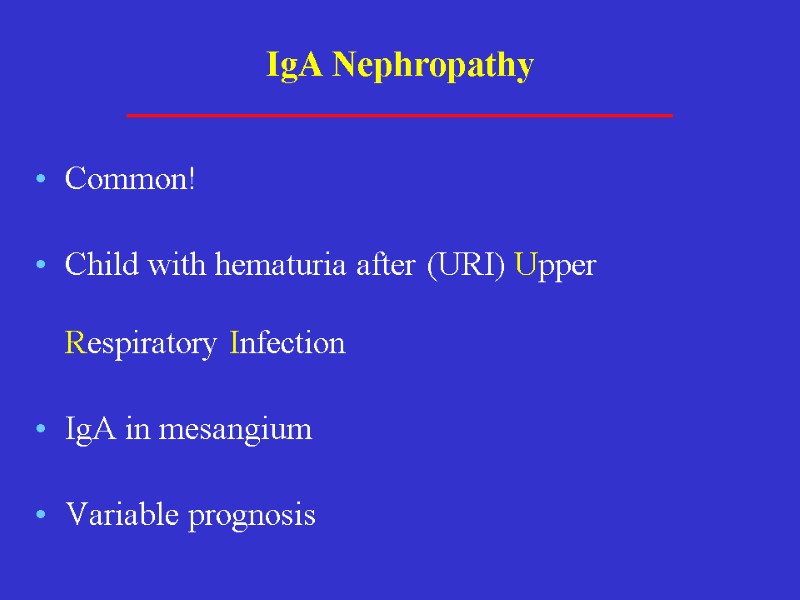
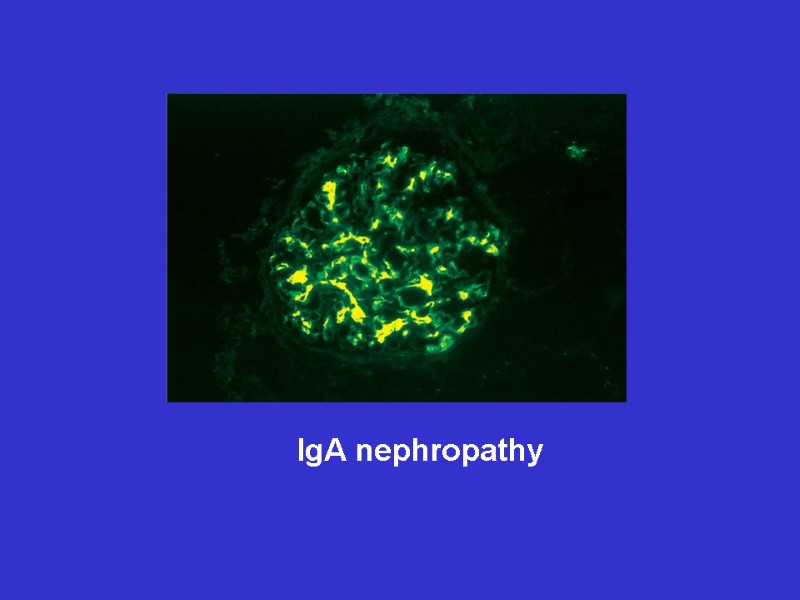
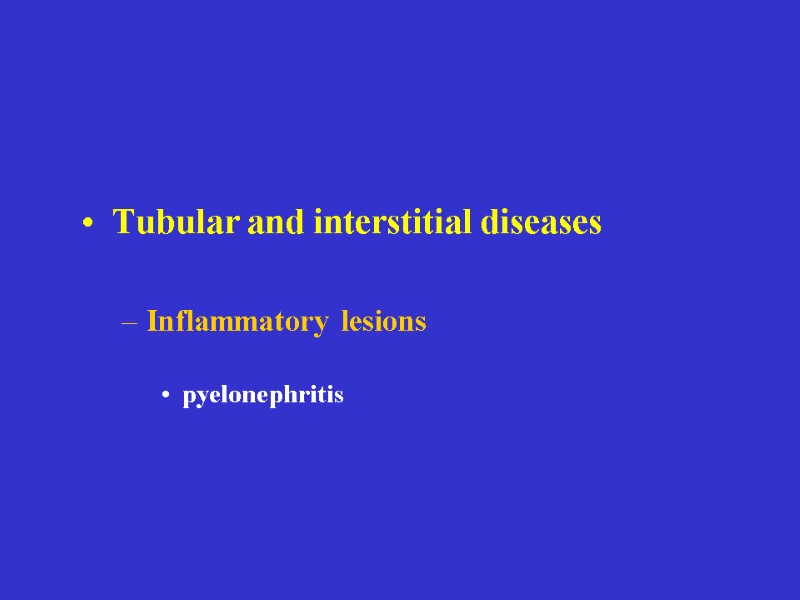
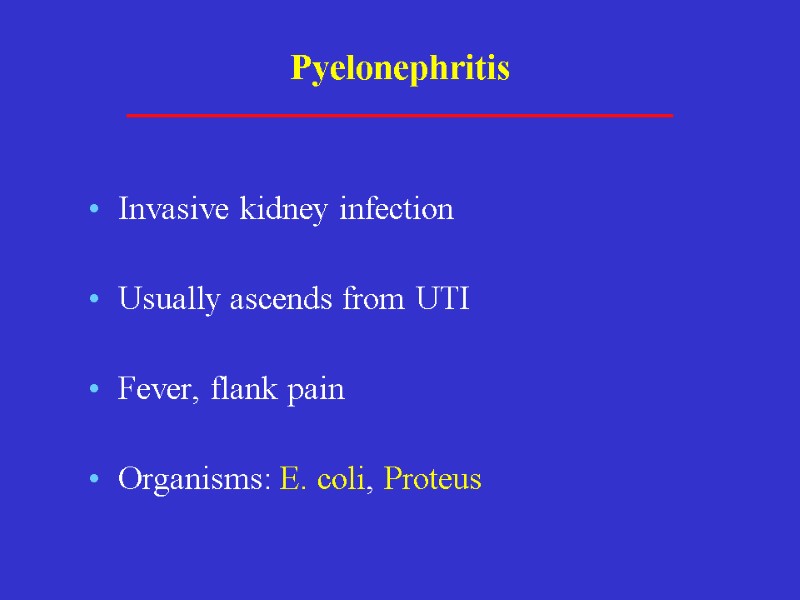
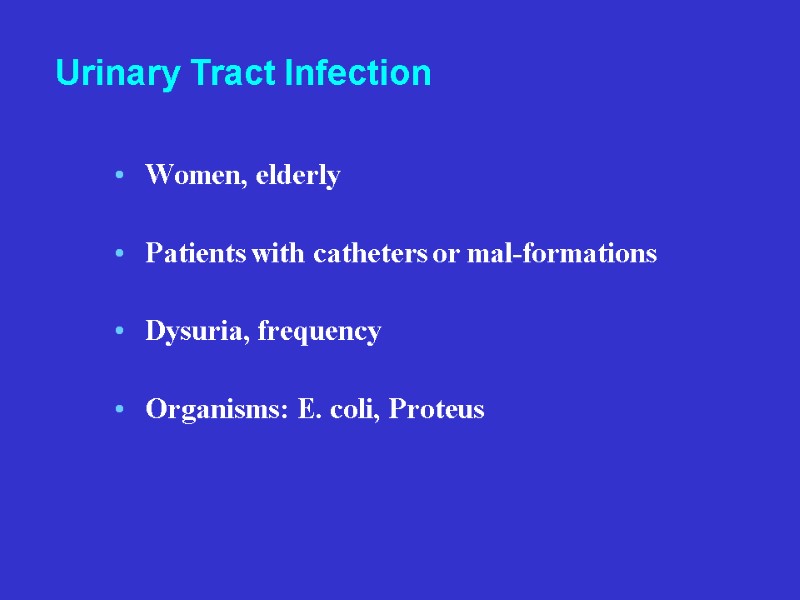
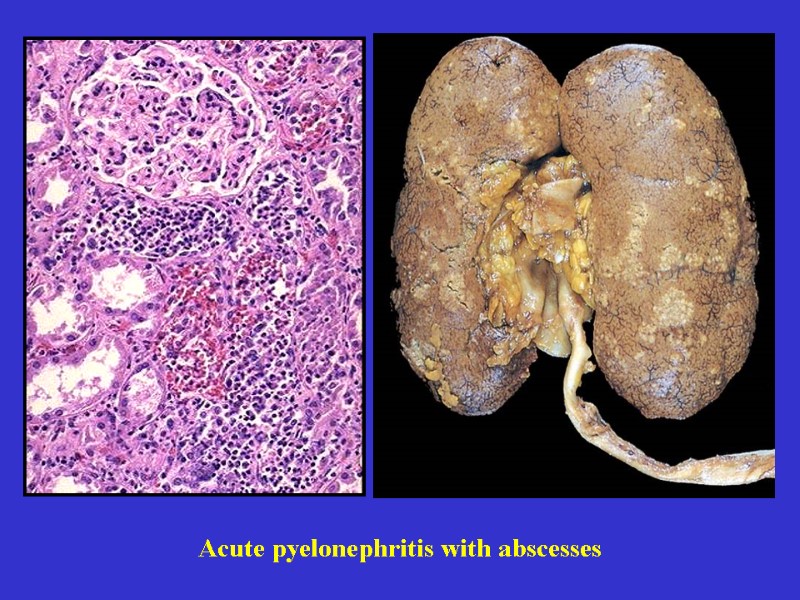
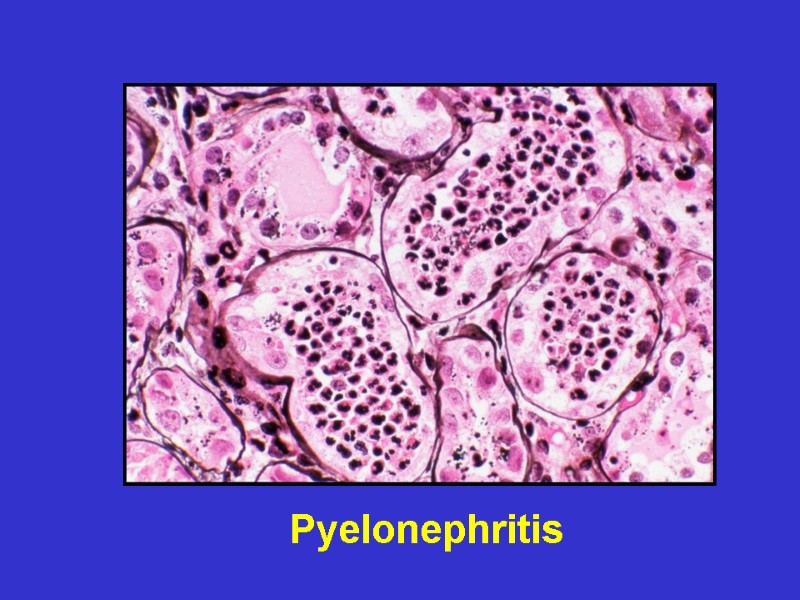
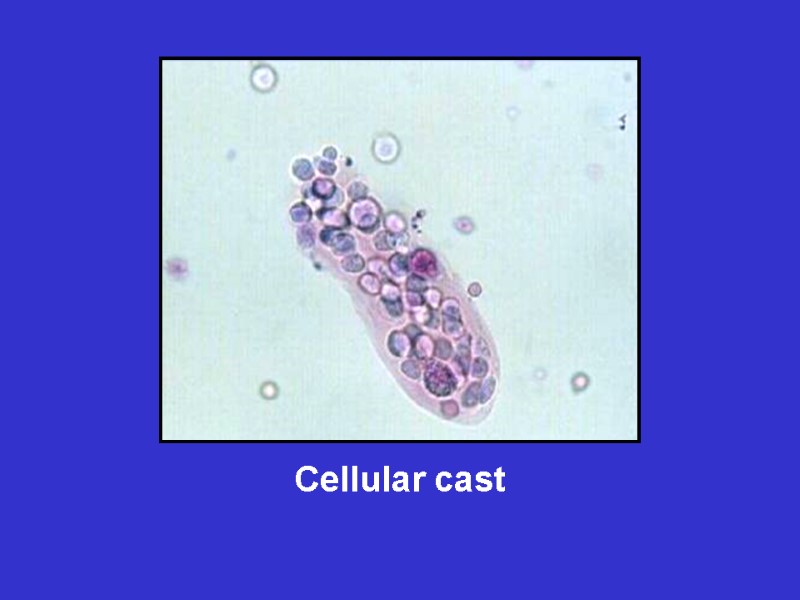
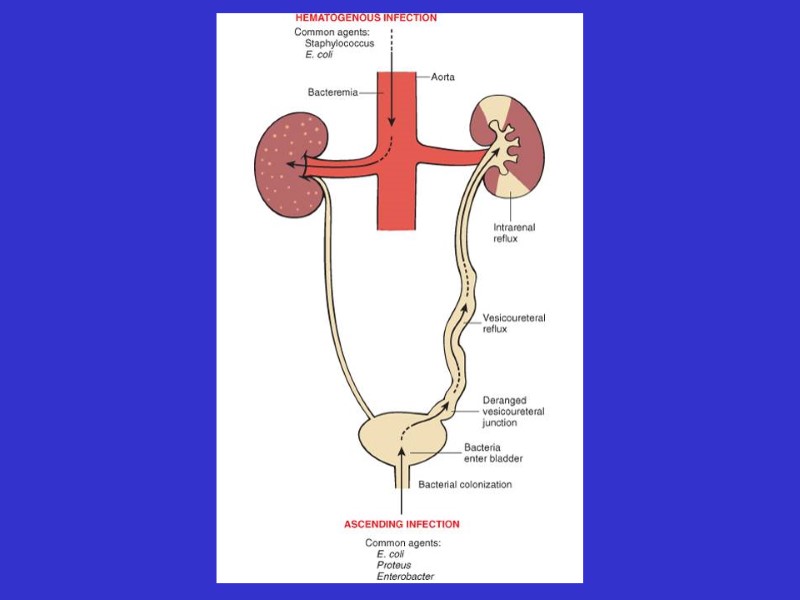
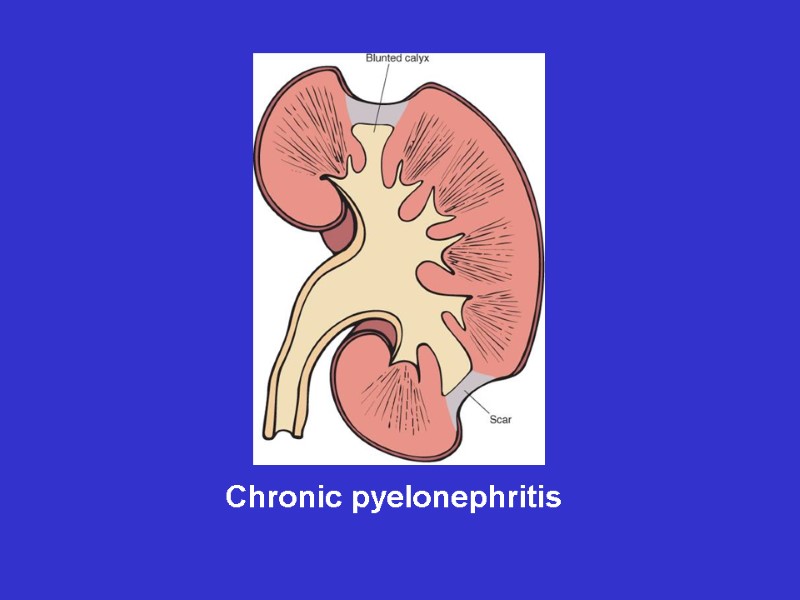
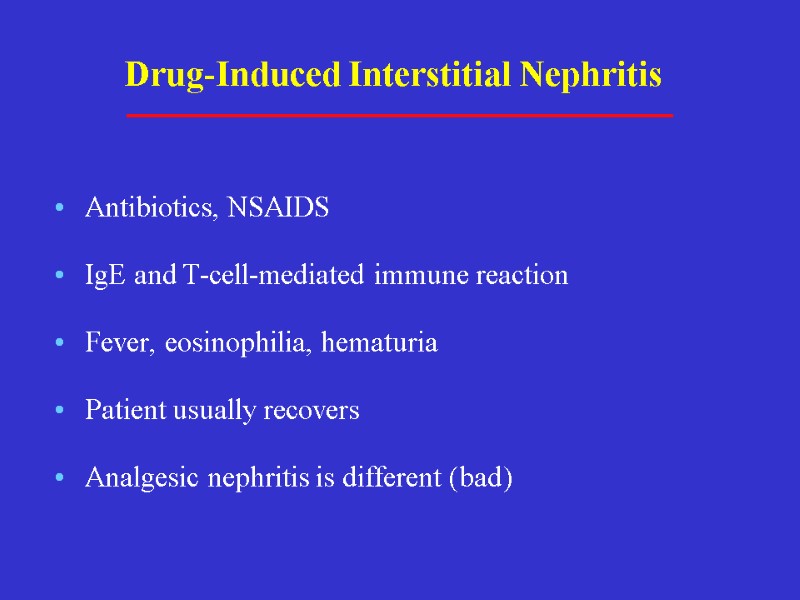
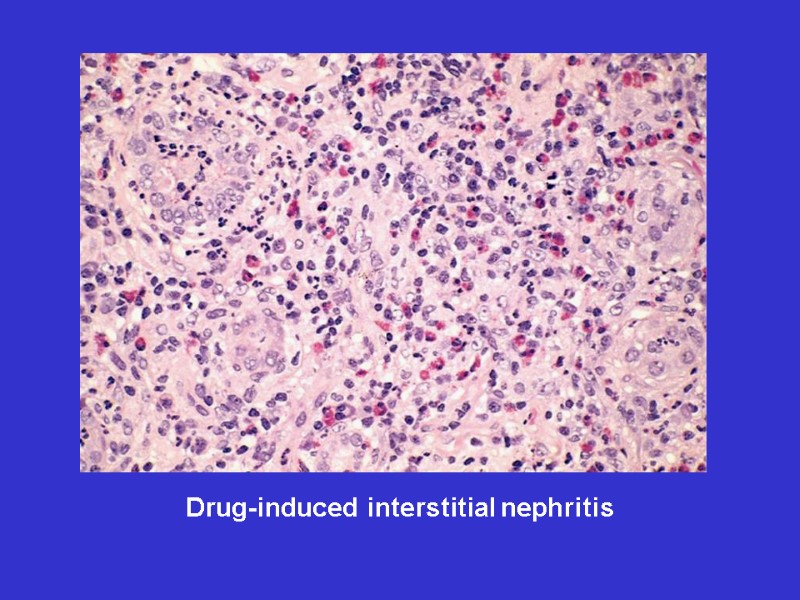
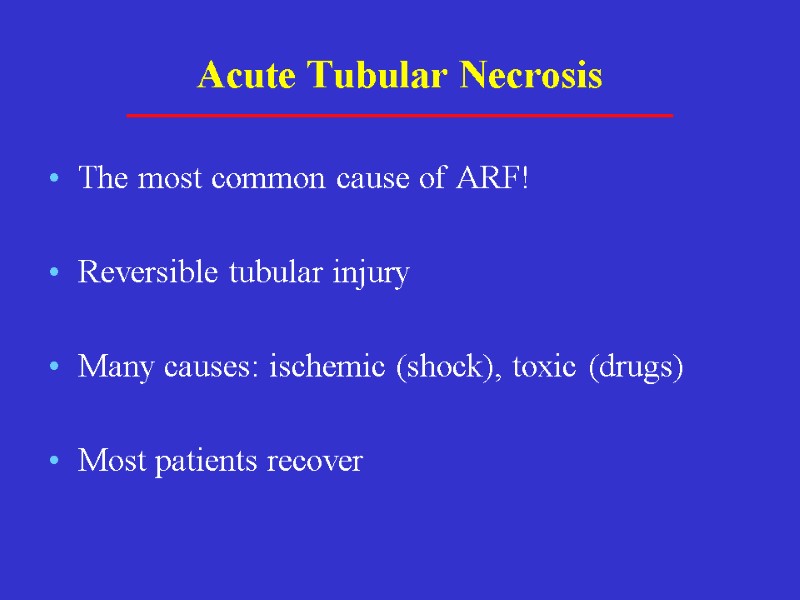
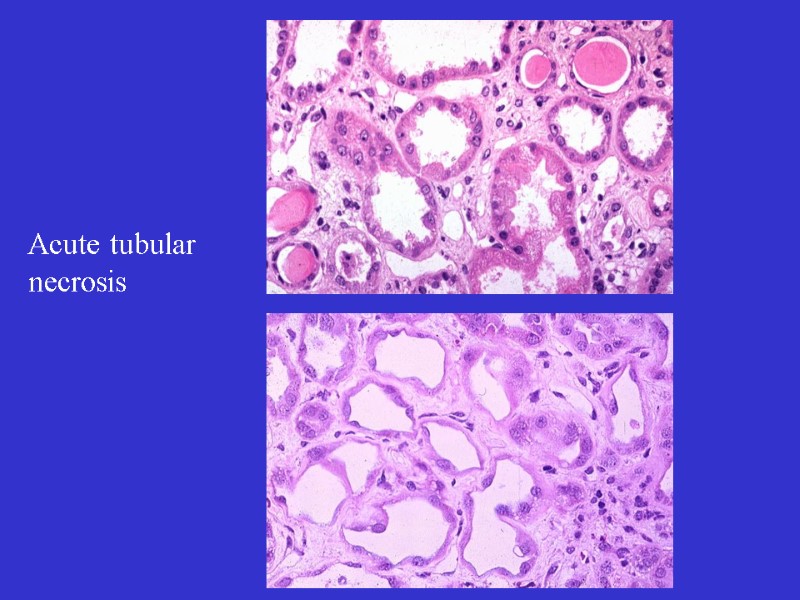
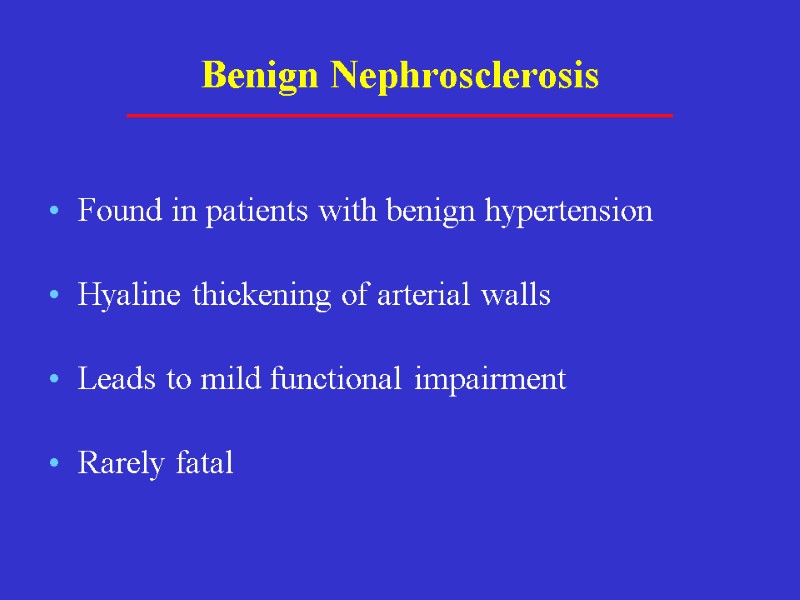
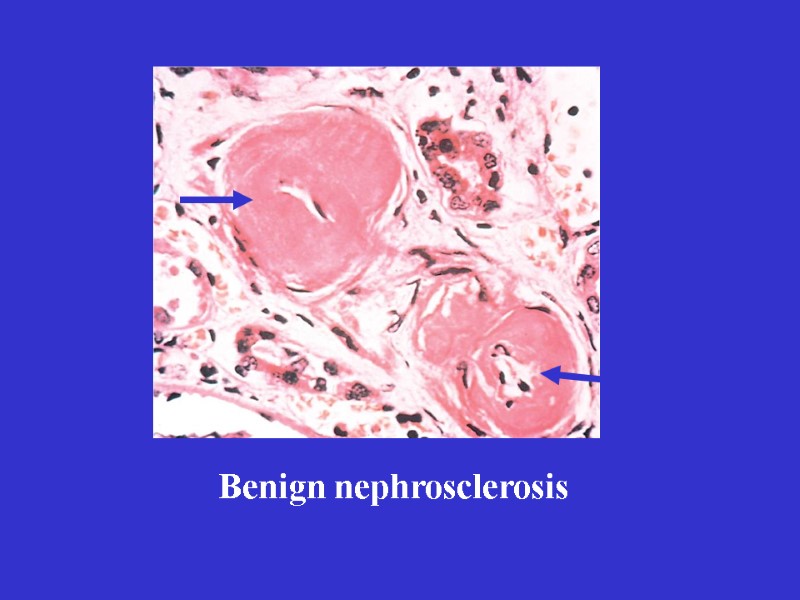
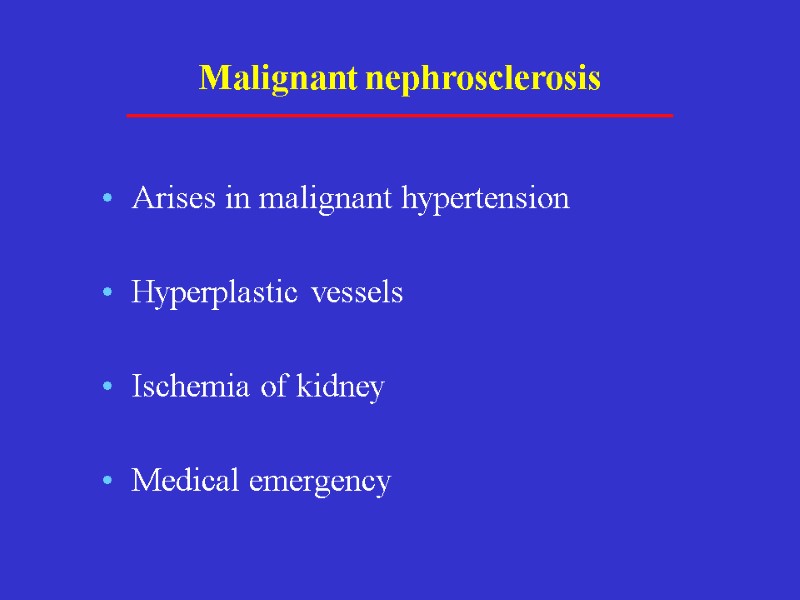
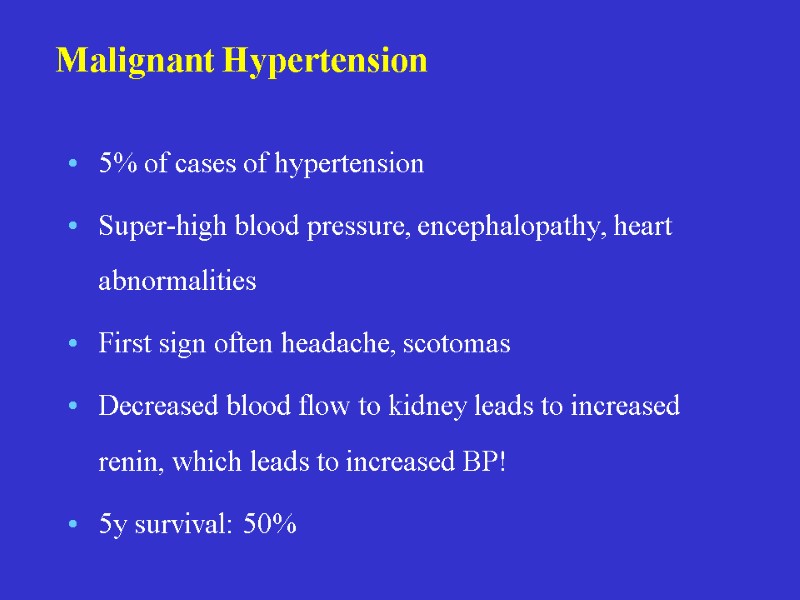
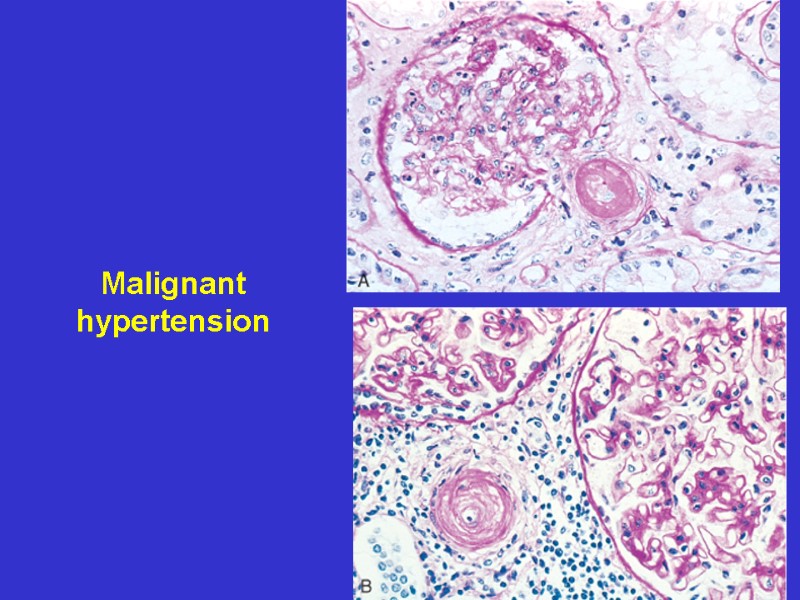
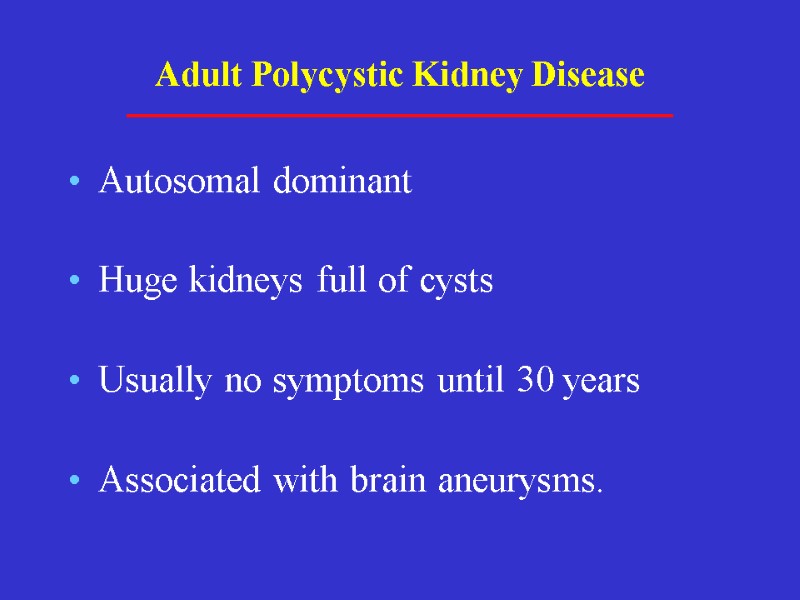
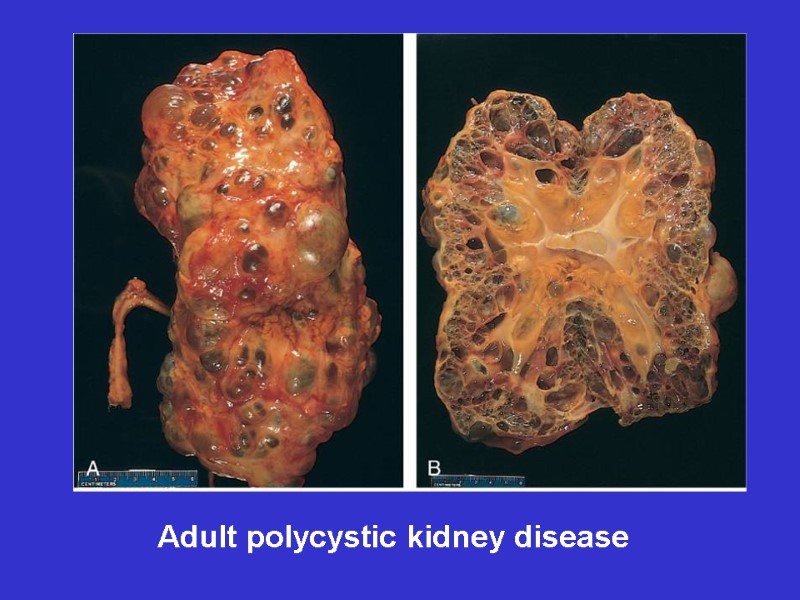
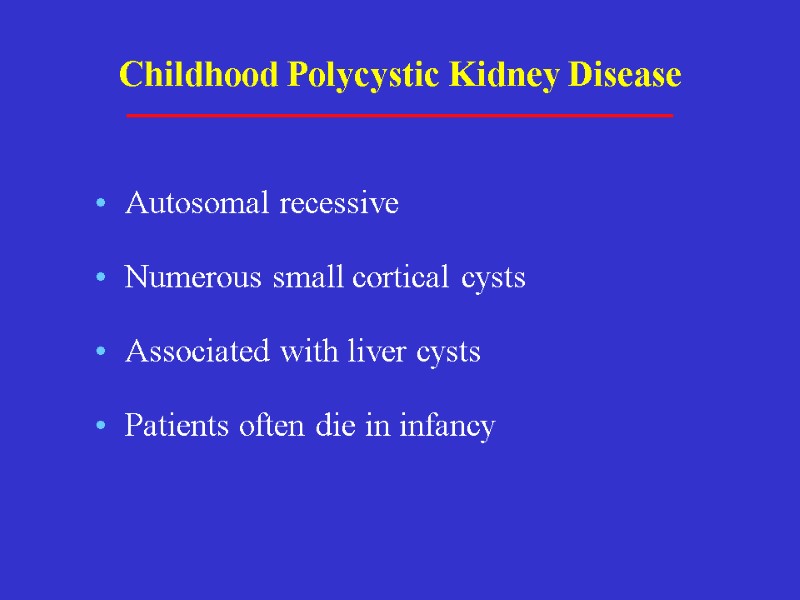
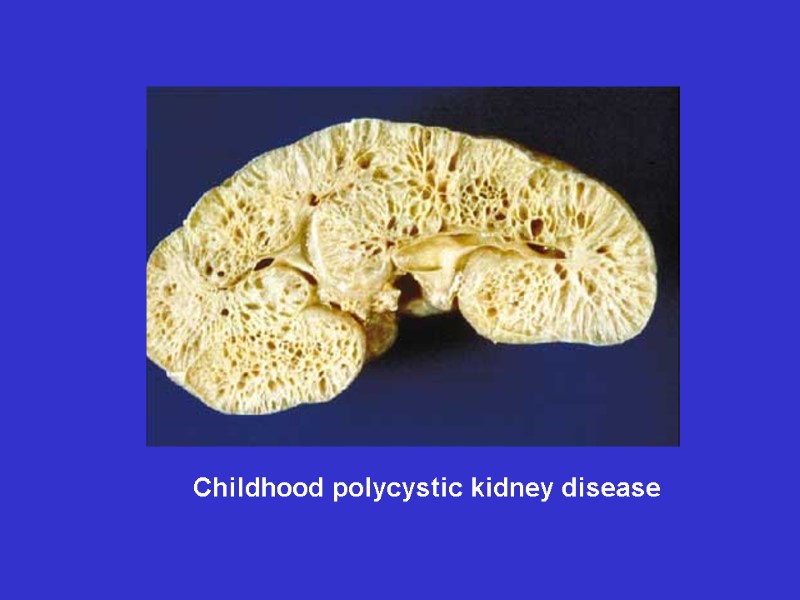
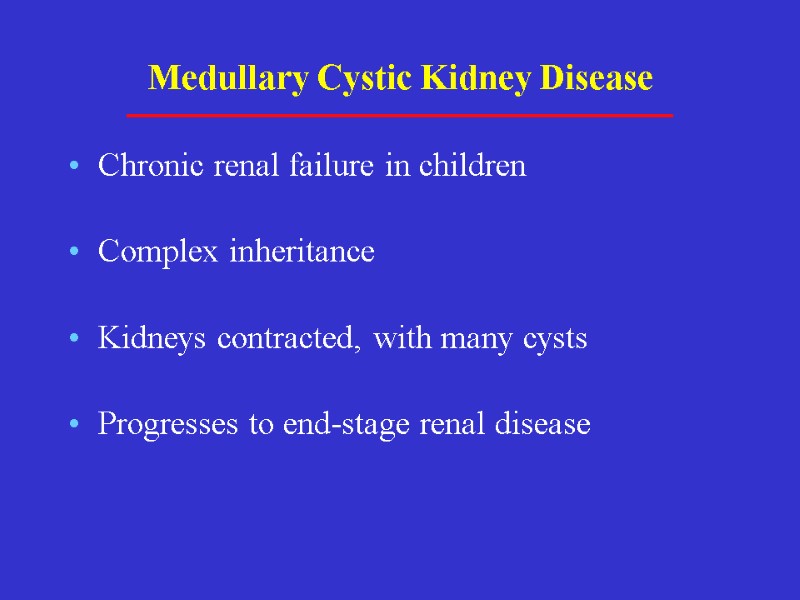
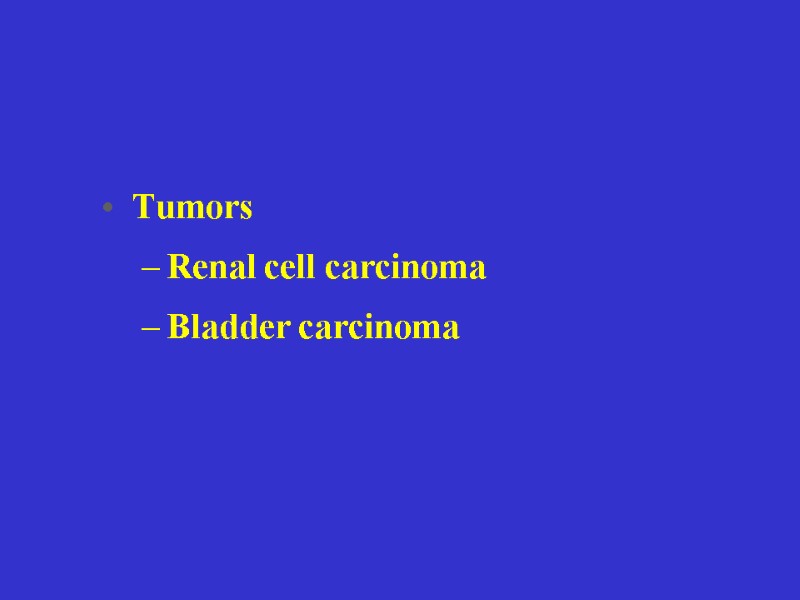
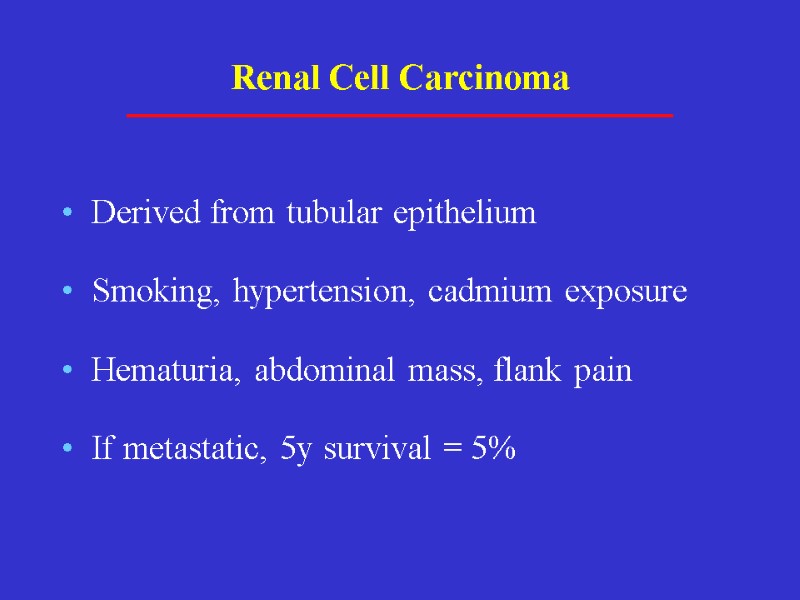
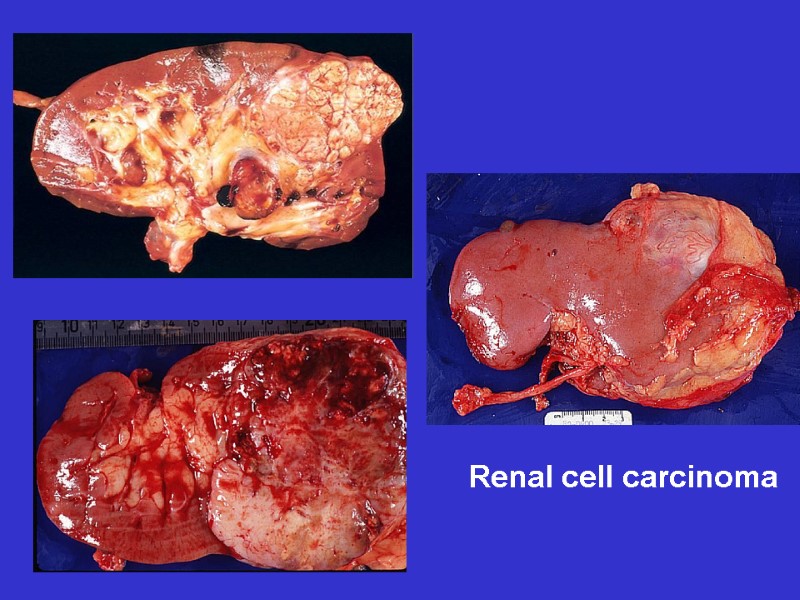
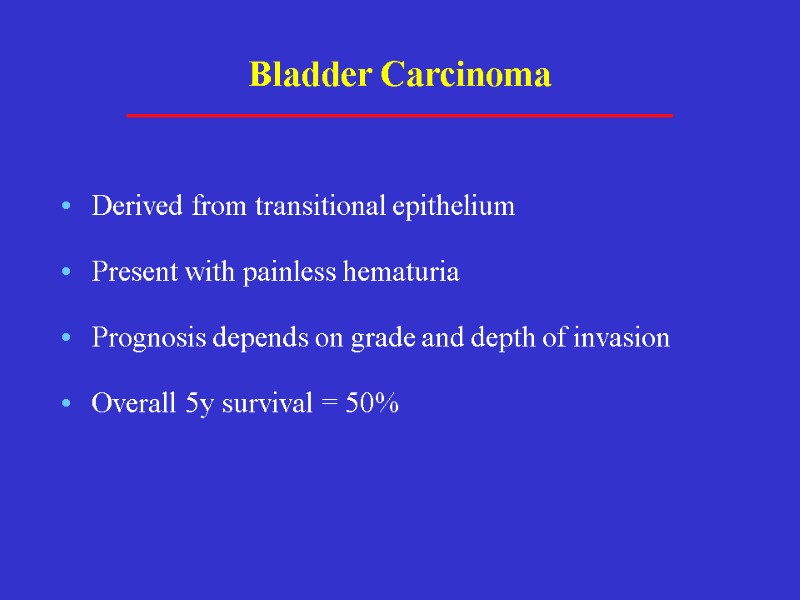
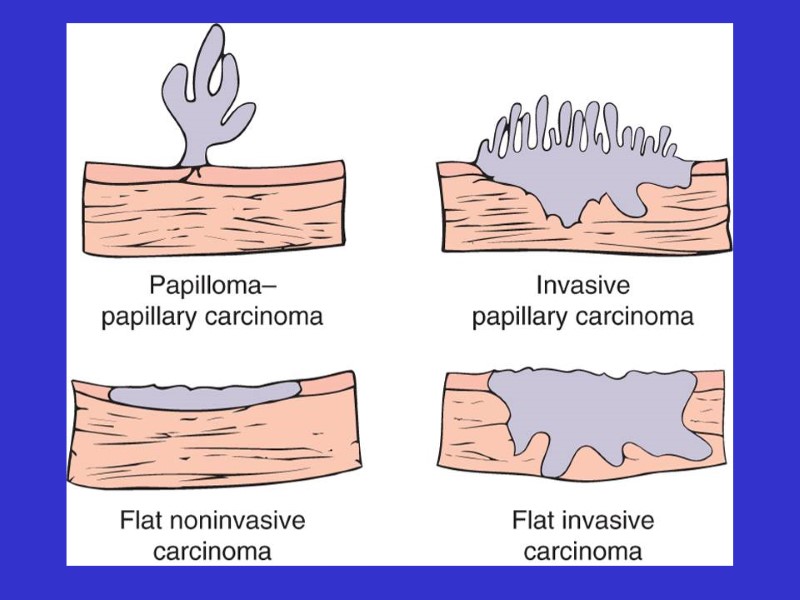
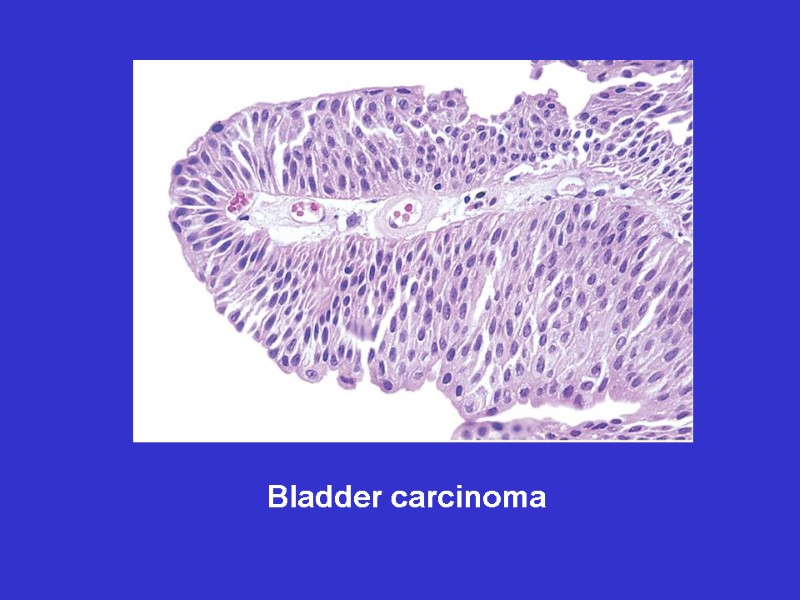
540-6-_renal_pathophysiology.ppt
- Количество слайдов: 57
 Renal Pathology
Renal Pathology
 Introduction: 150gm: each kidney 1700 liters of blood filtered 180 L of G. filtrate 1.5 L of urine / day. Kidney is a retro-peritoneal organ Blood supply: Renal Artery & Vein One half of kidney is sufficient – reserve kidney function: Filtration, Excretion, Secretion, Hormone synthesis.
Introduction: 150gm: each kidney 1700 liters of blood filtered 180 L of G. filtrate 1.5 L of urine / day. Kidney is a retro-peritoneal organ Blood supply: Renal Artery & Vein One half of kidney is sufficient – reserve kidney function: Filtration, Excretion, Secretion, Hormone synthesis.
 Kidney Location:
Kidney Location:
 Kidney Anatomy:
Kidney Anatomy:
 Renal Pathology Outline Glomerular diseases: Glomerulonephritis Tubular diseases: Acute tubular necrosis interstitial diseases: Pyelonephritis Diseases involving blood vessels: Nephrosclerosis Cystic diseases Tumors
Renal Pathology Outline Glomerular diseases: Glomerulonephritis Tubular diseases: Acute tubular necrosis interstitial diseases: Pyelonephritis Diseases involving blood vessels: Nephrosclerosis Cystic diseases Tumors
 Clinical Syndromes: Nephritic syndrome. Oliguria, Haematuria, Proteinuria, Oedema. Nephrotic syndrome. Gross proteinuria, hyperlipidemia, Acute renal failure Oliguria, loss of Kidney function - within weeks Chronic renal failure. Over months and years - Uremia
Clinical Syndromes: Nephritic syndrome. Oliguria, Haematuria, Proteinuria, Oedema. Nephrotic syndrome. Gross proteinuria, hyperlipidemia, Acute renal failure Oliguria, loss of Kidney function - within weeks Chronic renal failure. Over months and years - Uremia
 Introduction Functions of the kidney: excretion of waste products regulation of water/salt maintenance of acid/base balance secretion of hormones Diseases of the kidney glomeruli tubules interstitium vessels
Introduction Functions of the kidney: excretion of waste products regulation of water/salt maintenance of acid/base balance secretion of hormones Diseases of the kidney glomeruli tubules interstitium vessels

 Azotemia: BUN, creatinine Uremia: azotemia + more problems Acute renal failure: oliguria Chronic renal failure: prolonged uremia Abnormal findings
Azotemia: BUN, creatinine Uremia: azotemia + more problems Acute renal failure: oliguria Chronic renal failure: prolonged uremia Abnormal findings




 Glomerular diseases Nephrotic syndrome Minimal change disease Focal segmental glomerulosclerosis Membranous nephropathy Nephritic syndrome Post-infectious GN IgA (immune) nephropathy
Glomerular diseases Nephrotic syndrome Minimal change disease Focal segmental glomerulosclerosis Membranous nephropathy Nephritic syndrome Post-infectious GN IgA (immune) nephropathy
 Nephrotic Syndrome Massive proteinuria Hypoalbuminemia Edema Hyperlipidemia
Nephrotic Syndrome Massive proteinuria Hypoalbuminemia Edema Hyperlipidemia
 Adults: systemic disease (diabetes) Children: minimal change disease Characterized by loss of foot processes Good prognosis Causes
Adults: systemic disease (diabetes) Children: minimal change disease Characterized by loss of foot processes Good prognosis Causes
 Minimal change disease
Minimal change disease
 Minimal change disease Normal glumerular structure
Minimal change disease Normal glumerular structure
 Normal glomerulus Minimal change disease
Normal glomerulus Minimal change disease
 Focal Segmental Glomerulosclerosis Primary or secondary Some (focal) glomeruli show partial (segmental) hyalinization Unknown pathogenesis Poor prognosis
Focal Segmental Glomerulosclerosis Primary or secondary Some (focal) glomeruli show partial (segmental) hyalinization Unknown pathogenesis Poor prognosis
 Focal segmental glomerulosclerosis
Focal segmental glomerulosclerosis
 Membranous Glomerulonephritis Autoimmune reaction against unknown renal antigen Immune complexes Thickened GBM Subepithelial deposits
Membranous Glomerulonephritis Autoimmune reaction against unknown renal antigen Immune complexes Thickened GBM Subepithelial deposits
 Membranous glomerulonephritis
Membranous glomerulonephritis
 Nephritic Syndrome Hematuria Oliguria, azotemia Hypertension
Nephritic Syndrome Hematuria Oliguria, azotemia Hypertension
 Post-infectious GN, IgA nephropathy Immunologically-mediated Characterized by proliferative changes and inflammation Causes
Post-infectious GN, IgA nephropathy Immunologically-mediated Characterized by proliferative changes and inflammation Causes
 Post-Infectious Glomerulonephritis Child after streptococcal throat infection Immune complexes Hypercellular glomeruli Subepithelial humps
Post-Infectious Glomerulonephritis Child after streptococcal throat infection Immune complexes Hypercellular glomeruli Subepithelial humps
 Post-infectious glomerulonephritis
Post-infectious glomerulonephritis
 IgA Nephropathy Common! Child with hematuria after (URI) Upper Respiratory Infection IgA in mesangium Variable prognosis
IgA Nephropathy Common! Child with hematuria after (URI) Upper Respiratory Infection IgA in mesangium Variable prognosis
 IgA nephropathy
IgA nephropathy
 Tubular and interstitial diseases Inflammatory lesions pyelonephritis
Tubular and interstitial diseases Inflammatory lesions pyelonephritis
 Pyelonephritis Invasive kidney infection Usually ascends from UTI Fever, flank pain Organisms: E. coli, Proteus
Pyelonephritis Invasive kidney infection Usually ascends from UTI Fever, flank pain Organisms: E. coli, Proteus
 Women, elderly Patients with catheters or mal-formations Dysuria, frequency Organisms: E. coli, Proteus Urinary Tract Infection
Women, elderly Patients with catheters or mal-formations Dysuria, frequency Organisms: E. coli, Proteus Urinary Tract Infection
 Acute pyelonephritis with abscesses
Acute pyelonephritis with abscesses
 Pyelonephritis
Pyelonephritis
 Cellular cast
Cellular cast

 Chronic pyelonephritis
Chronic pyelonephritis
 Drug-Induced Interstitial Nephritis Antibiotics, NSAIDS IgE and T-cell-mediated immune reaction Fever, eosinophilia, hematuria Patient usually recovers Analgesic nephritis is different (bad)
Drug-Induced Interstitial Nephritis Antibiotics, NSAIDS IgE and T-cell-mediated immune reaction Fever, eosinophilia, hematuria Patient usually recovers Analgesic nephritis is different (bad)
 Drug-induced interstitial nephritis
Drug-induced interstitial nephritis
 Acute Tubular Necrosis The most common cause of ARF! Reversible tubular injury Many causes: ischemic (shock), toxic (drugs) Most patients recover
Acute Tubular Necrosis The most common cause of ARF! Reversible tubular injury Many causes: ischemic (shock), toxic (drugs) Most patients recover
 Acute tubular necrosis
Acute tubular necrosis
 Benign Nephrosclerosis Found in patients with benign hypertension Hyaline thickening of arterial walls Leads to mild functional impairment Rarely fatal
Benign Nephrosclerosis Found in patients with benign hypertension Hyaline thickening of arterial walls Leads to mild functional impairment Rarely fatal
 Benign nephrosclerosis
Benign nephrosclerosis
 Malignant nephrosclerosis Arises in malignant hypertension Hyperplastic vessels Ischemia of kidney Medical emergency
Malignant nephrosclerosis Arises in malignant hypertension Hyperplastic vessels Ischemia of kidney Medical emergency
 5% of cases of hypertension Super-high blood pressure, encephalopathy, heart abnormalities First sign often headache, scotomas Decreased blood flow to kidney leads to increased renin, which leads to increased BP! 5y survival: 50% Malignant Hypertension
5% of cases of hypertension Super-high blood pressure, encephalopathy, heart abnormalities First sign often headache, scotomas Decreased blood flow to kidney leads to increased renin, which leads to increased BP! 5y survival: 50% Malignant Hypertension
 Malignant hypertension
Malignant hypertension
 Adult Polycystic Kidney Disease Autosomal dominant Huge kidneys full of cysts Usually no symptoms until 30 years Associated with brain aneurysms.
Adult Polycystic Kidney Disease Autosomal dominant Huge kidneys full of cysts Usually no symptoms until 30 years Associated with brain aneurysms.
 Adult polycystic kidney disease
Adult polycystic kidney disease
 Childhood Polycystic Kidney Disease Autosomal recessive Numerous small cortical cysts Associated with liver cysts Patients often die in infancy
Childhood Polycystic Kidney Disease Autosomal recessive Numerous small cortical cysts Associated with liver cysts Patients often die in infancy
 Childhood polycystic kidney disease
Childhood polycystic kidney disease
 Medullary Cystic Kidney Disease Chronic renal failure in children Complex inheritance Kidneys contracted, with many cysts Progresses to end-stage renal disease
Medullary Cystic Kidney Disease Chronic renal failure in children Complex inheritance Kidneys contracted, with many cysts Progresses to end-stage renal disease
 Tumors Renal cell carcinoma Bladder carcinoma
Tumors Renal cell carcinoma Bladder carcinoma
 Renal Cell Carcinoma Derived from tubular epithelium Smoking, hypertension, cadmium exposure Hematuria, abdominal mass, flank pain If metastatic, 5y survival = 5%
Renal Cell Carcinoma Derived from tubular epithelium Smoking, hypertension, cadmium exposure Hematuria, abdominal mass, flank pain If metastatic, 5y survival = 5%
 Renal cell carcinoma
Renal cell carcinoma
 Bladder Carcinoma Derived from transitional epithelium Present with painless hematuria Prognosis depends on grade and depth of invasion Overall 5y survival = 50%
Bladder Carcinoma Derived from transitional epithelium Present with painless hematuria Prognosis depends on grade and depth of invasion Overall 5y survival = 50%

 Bladder carcinoma
Bladder carcinoma

